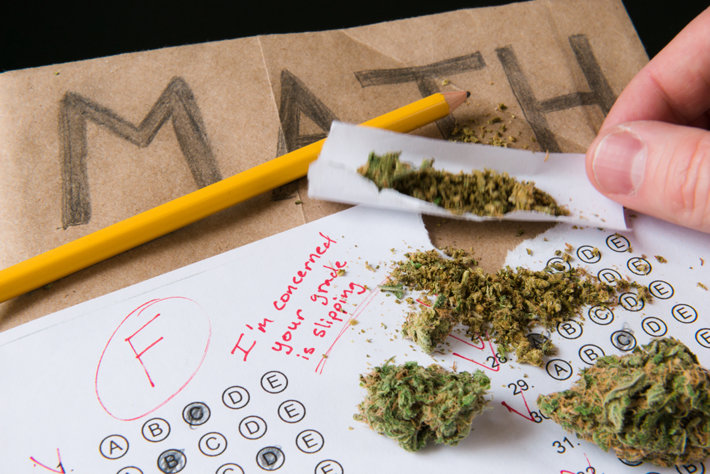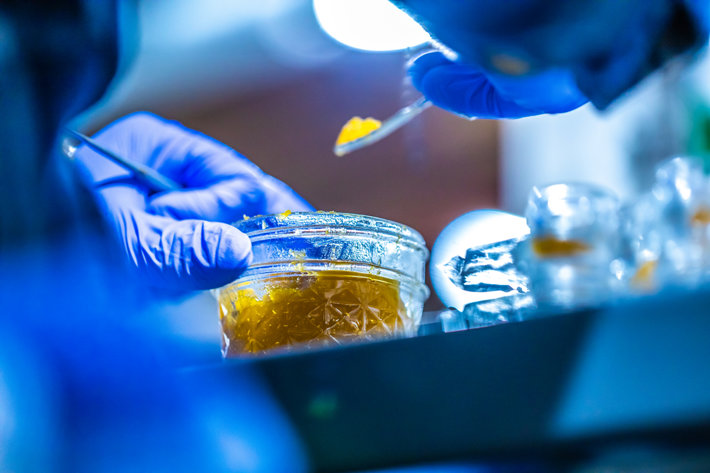Marijuana in 2020—As Potency Increases, So Does Risk

Though cannabis has been in use in some form or another for centuries, today’s cannabis is quite different from the cannabis of yesteryear. In fact, cannabis products today are exponentially more potent than cannabis products were even just a few decades ago.
There is no doubt that today’s marijuana is more potent, but does that automatically mean that today’s marijuana is more dangerous? One would think so, but what does the research say?
Marijuana Over the Years
There is no doubt that marijuana is far more potent than it was half a century ago. Some believe that the increased potency has a direct effect on increasing risk in usage. But it’s essential to examine the data to see if that is indeed true.
When the potency of other drugs is increased (think opiates, meth, cocaine, alcohol, etc.), the risk goes up. The more potent the drug, the more severe the effect on the individual’s health.
But is this principle also true with cannabis, a drug that’s usually been viewed as quite different from hard drugs?
According to Tom Freeman, director of the addiction and mental health group at the University of Bath in England, a spike in treatment center admissions for marijuana addiction rising alongside increasing marijuana potency indicates that an increase in potency is directly related to the rise in risk, harm, and addictive factors. Quoting Freeman: “As the strength of cannabis has increased, so too has the number of people entering treatment for cannabis use problems. In Europe, more people now enter drug treatment because of pot than heroin or cocaine. As the strength of cannabis has risen, consumers are faced with limited information to help them monitor their intake and guide decisions about relative benefits and risks.”
Freeman and his researchers analyzed how THC concentrations have changed over time. The researchers studied data from tests done on more than 80,000 cannabis samples collected over the past 50 years in the U.S., U.K., Netherlands, Italy, France, New Zealand, and Denmark.
THC concentrations for herbal cannabis increased by an average of about 14 percent from 1970 to 2017. Concentrations for THC in cannabis resin increased by about 24 percent from 1975 to 2017. The potency of THC in cannabis resin has increased so much that it is now more potent than most herbal cannabis. According to study co-author Sam Craft: “Cannabis resin—or ‘hash’—is often seen as a safer type of cannabis, but our findings show that it is now stronger than herbal cannabis. Traditionally, cannabis resin contained much lower amounts of THC with equal quantities of CBD [cannabidiol]. However, CBD concentrations have remained stable as THC has risen substantially, meaning it is now much more harmful than it was many years ago.”
Finally, from Freeman and Craft’s research paper itself: “The effects of acute THC are dose‐dependent and exposure to increasing doses of THC over time could increase long‐term health risks such as the severity of cannabis use disorders risk of developing psychosis and risk of relapse in people with psychosis.”
There is no doubt that marijuana potency is increasing. But other than a tandem increase in treatment center admissions for marijuana addiction, are there any other reasons to believe that an increase in potency is directly related to a rise in risk?
Harmful Side Effects and Increased Risk of Use

Another research paper posits that a higher potency of cannabis will result in a higher risk of use, particularly among young people. And this makes sense from a logical standpoint. We already know that cannabis has a powerful impact on young people, as their brains and neurological pathways are still developing. If young people are exposed to a form of cannabis that is far more potent than past strains, this version of the drug will have an even more substantial effect on them, potentially inspiring them to seek out the substance again in the future.
Dr. Nora Volkow, director of the National Institute on Drug Abuse, put together a research paper with her colleagues on the adverse effects of marijuana use. She, too recognized the increase in risk that is likely to come about from an increase in potency. Quoting her writings: “The THC content, or potency, of marijuana, as detected in confiscated samples, has been steadily increasing from about 3% in the 1980s to 12% in 2012. This increase in THC content raises concerns that the consequences of marijuana use may be worse now than in the past and may account for the significant increases in emergency department visits by persons reporting marijuana use and the increases in fatal motor-vehicle accidents.”

Yet another research paper, this one written by addiction specialist Dr. Elizabeth Stuyt, focused on how the increase in cannabis potency is hazardous for young people. According to her research: “We now have concentrated THC products such as oil, shatter, dab, and edibles that have been able to get the THC concentration upwards of 95%. There is absolutely no research that indicates this level of THC is beneficial for any medical condition. The purpose of these products is to produce a high, and the increased potency makes them potentially more dangerous and more likely to result in addiction.”
Marijuana, Addiction, and Treatment
In Dr. Volkow’s report cited earlier, she clearly states: “Despite some contentious discussions regarding the addictiveness of marijuana, the evidence clearly indicates that long-term marijuana use can lead to addiction. Indeed, approximately 9% of those who experiment with marijuana will become addicted.”
There is no doubt that marijuana is addictive and that the more one uses and the longer they use it, the more likely they are to fall prey to addiction. If you know someone who uses marijuana, do not buy the narrative that marijuana is “safe” or risk-free. It’s a false narrative. Marijuana use does carry risk. If someone you care about is using cannabis products and cannot stop using them, make sure they get into a drug and alcohol rehab center as soon as possible.
Sources:
- https://onlinelibrary.wiley.com/doi/10.1111/add.15253
- https://www.usnews.com/news/health-news/articles/2020-11-20/yes-pot-isstronger-now-than-in-decades-past-study-finds
- https://www.ncbi.nlm.nih.gov/pmc/articles/PMC4987131/
- https://www.ncbi.nlm.nih.gov/pmc/articles/PMC4827335/
- https://www.ncbi.nlm.nih.gov/pmc/articles/PMC6312155/


 ®
®